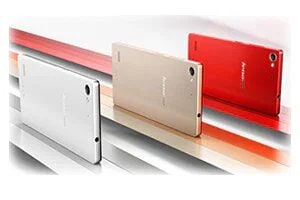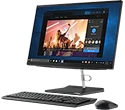-
Explore LaptopsCopilot+ PC 2-in-1 Laptops Gaming Laptops Mobile Workstations View all Laptops Windows 11
-
By BrandThinkPad ThinkBook IdeaPad LOQ Yoga Legion
-
Espot Path:
/espotdirctory/pc-laptops-espot1
-
Espot Path:
/espotdirctory/pc-laptops-espot2
-

 Contact
ContactCONTACT US
Service Centers
Think products & projects: choang@lenovo.comTECHNICAL SUPPORT
Kindly get information of product and S/N before contact us.
Hotline: 1800 6318 (Mon – Fri, 8:30 AM – 5:30 PM)
Close during public holidaysLENOVO VIETNAM REP. OFFICE
Hochiminh office: R. 1701A, 17F, Empress Tower, 138-142 Hai Ba Trung Str., Ward Dakao, District 1.
Tel: +84 28 3824 3504
Fax: +84 28 3824 3503
-

 Contact
ContactCONTACT US
Service Centers
Think products & projects: choang@lenovo.comTECHNICAL SUPPORT
Kindly get information of product and S/N before contact us.
Hotline: 1800 6318 (Mon – Fri, 8:30 AM – 5:30 PM)
Close during public holidaysLENOVO VIETNAM REP. OFFICE
Hochiminh office: R. 1701A, 17F, Empress Tower, 138-142 Hai Ba Trung Str., Ward Dakao, District 1.
Tel: +84 28 3824 3504
Fax: +84 28 3824 3503

What is 3G?
Short for third generation, 3G is one of the latest editions of mobile telecommunications technology. 3G technology can transfer information at a rate of at least 200 kbit/s, twice as fast as many 2G technologies. Most 3G providers also provide mobile broadband access to smartphones and laptop computers 3G technology opens the door to mobile Internet access, fixed wireless Internet access, mobile TV and video calls.
Two major cellular tech branches make up 3G: CDMA (code division multiple access) and GSM (global system for multiple access). CDMA-based 3G providers such as Sprint and Verizon use Evolution-Data Optimized standards, while GSM providers use High Speed Packet Access standards. These technologies are the engines that drive faster service for cell phone users. Along with greater speed, 3G technology also boasted increased security. 3G networks use the advanced KASUMI block cipher instead of the outdated A5/1 stream cipher.
The result of these technologies is improved user experience. Users rely on smartphones to make calls, run apps and browse the Internet. 3G networks deliver the speed and reliability that modern users have come to expect. With this speed at their disposal, smartphone users can run complex apps previously only available on computers. Without this network technology, mobile manufacturers would not be able push the envelope in terms of smartphone capabilities.
Any service advertised as 3G is required to meet IMT-2000 technical standards, which calls for a minimum peak data rate of about 0.2 Mbit/s.Providers often use advanced 3G releases to provide higher 3G speeds than the minimum requirements. In 2007, just 15.8 percent of worldwide mobile phone users had 3G technology. By 2012, 80 percent of the US population was running its smartphones on at least 3G service.
3G has established itself as a preferred method of mobile service across the world. As providers continue to refine and advance this technology, expect faster speeds, better security and more reliable coverage.
How will 3g help me?
Mobile users demand speed and reliability. 3G technology promotes the best of both. Short for third generation, this network technology boasts minimum peak speeds of 200 kbit/s. That means clearer phone calls, quicker app downloads and faster Web browsing.
In order for a provider to advertise its service as 3G, it must comply with the IMT-2000 specifications, which call for approved GSM or CDMA coding. These advanced standards ensure quality mobile performance.
In practice, 3G service turns smartphones into pocket computers. Users can receive phone calls, check email, browse the Internet and edit documents at speeds comparable to a desktop device. Whether you’re a professional looking to take work on the go, a student juggling academic rigors or a parent balancing everyday life, this type of mobile service provides invaluable access to the Web.
Not only do 3G networks boost performance, they also enhance security. Second-generation networks used A5/1 stream cipher technology, which was prone to security leaks. 3G networks updated to the KASUMI block cipher, a more complex algorithm that protects users’ data.
Across the board, 3G is a network upgrade that promises to improve the mobile experience. If you use your cell phone regularly, this upgrade will save you time and allow you access to advanced functions.
How do I know if my phone or tablet is using or can use 3g?
A device must be 3G-compatible to access 3G networks. Most providers will advertise their 3G-ready devices, so you should not have a problem determining whether or not a device supports this network while shopping.
3G-compatible phones and tablets often display a small icon in the corner of their screens when 3G is connected. If you see this icon, you are on a 3G network. Your device might still be 3G-compatible even if you do not see this icon. Check your settings and owner’s manual to see if you need to turn on 3G network coverage.
As you shop for your next smartphone or tablet, consider how 3G coverage could enhance your mobile experience. Short for third generation, 3G offers high download speeds and reliability, two paramount features for on-the-go users. 3G devices transfer information at speeds of at least 200 kbit/s, twice as much as many second-generation devices. 3G technology also offers upgraded security, using the KASUMI block cipher algorithm in place of the vulnerable A5/1 stream cipher. The result is more privacy and fewer potential security threats.
If your phone or tablet is not 3G-compatible, it might be time for an upgrade. This advanced network will improve your user experience and open up a world of mobile possibilities.
Can I make video calls using 3g over my tablet or smartphone?
Earlier networks could only support voice and text correspondence, but 3G networks have the bandwidth to deliver rich-media communication, including video calls. Apps like Skype enable users to conduct video calls anywhere they can receive a 3G connection. This technology adds a personal touch to traditional phone calls.
The difference between hearing someone’s voice and seeing his or her face is profound. With the latest mobile technology, mobile users can count on reliable signals as they make video calls. The IMT-2000 specifications for 3G networks enable it to support large amounts of data. In order for providers to advertise a 3G network, it must deliver data at a transfer rate of at least 200 kbit/s, twice as much as typical second-generation networks. This opens up a world of opportunity for mobile Internet access, mobile TV and video conferencing.
Experts forecast that video conferencing will grow exponentially over the next few years, and mobile calls are at the core of that surge. Whether it’s a business meeting between potential partners or holiday call home, video calls offer an unprecedented level of personal communication. As you shop for your next tablet or smartphone, consider the benefits of a 3G device. This next-generated technology offers enhanced user performance and updated security. You’ll have access to video conferencing and other modern mobile features.












